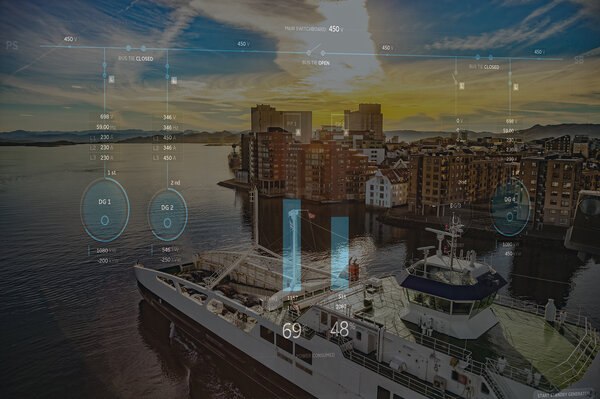
Feasibility studies
Ulstein carries out multiple studies, one of which is feasibility studies. A feasibility study provides the insight for selecting the best solution towards CAPEX, OPEX and environmental impact. Here's an example of how we can carry out an energy storage feasibility study.
What to expect from a feasibility study
The feasibility study will present solutions for battery applications and estimates on the solutions’ impact on ship performances. Ulstein analyses the operational parametres from a multi-discipline perspective and optimises the energy storage and consumption strategy for the vessel and its operator.
There are multiple opportunities and challenges related to integrating a battery energy storage system (BESS) with a power system. There is also a need to identify and quantify operational gains (fuel, efficiency, etc.) and enhanced safety levels.
As part of our marine advisory, this is how Ulstein works to find and recommend the best solution in a hybrid feasibility report:
- Identify and define the most suitable function of a BESS, one or more of the below:
- Peak shaving. BESS supports fast load demands on behalf of a large (slow) generator set
- Enhanced dynamic performance or demanding peak shaving. BESS supports fast load demands on behalf of a large (slow) generator set
- Spinning reserve. BESS acts as standby power and energy source, reducing minimum number of online generator sets
- Enhanced ride-through capability. This is similar to spinning reserve, but for dedicated sub-systems, such as crane and thrusters, not at common point of connection (main switchboards)
- Power regeneration (energy recapture) from mission equipment, such as crane operations
- Determine correct point of physical integration of a BESS in the system architecture, as a result of desired functionality
- Failure mode performances, covering a defined array of error conditions
- Mission equipment (crane)/operations/ship platform joint error condition performances
- Estimates on system capacities and capabilities required to comply with requirements as result of design functionality
- Estimates on fuel savings and reduced emissions in selected operations
- Viable configurations and sizes of energy storage to provide performance objectives
- Estimates on cost benefit for different levels of system integration

Conscious carbon steps
The shipping industry is transitioning towards reduced emissions and improved energy efficiency. Whether integrated into a novel design, or retrofitted, a solution supporting the transition should be the best compromise between operational needs, the most environmentally friendly solution, cost, and benefit.
Explore ULSTEIN POWER solutions
Get in touch

Jose Jorge Garcia Agis
- Description
- Managing Director
- Affiliation
- Ulstein International AS
